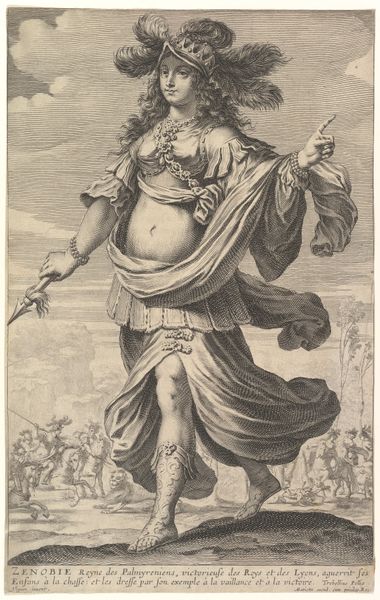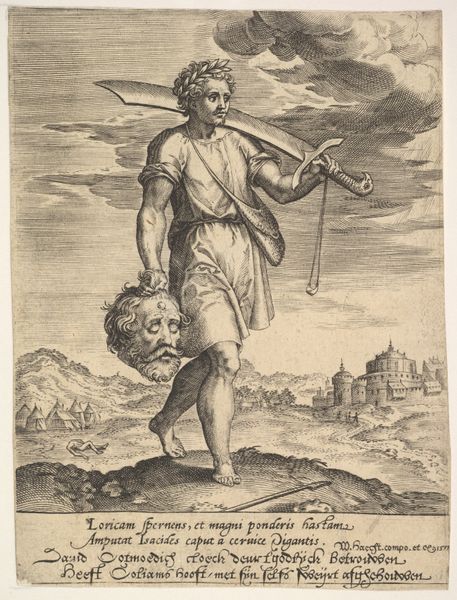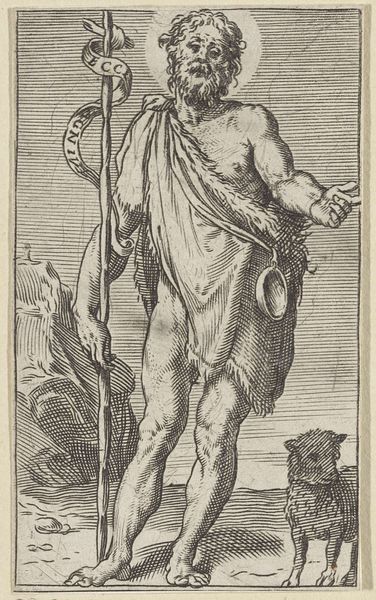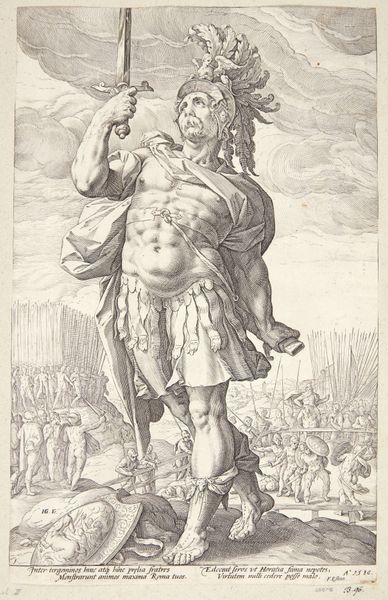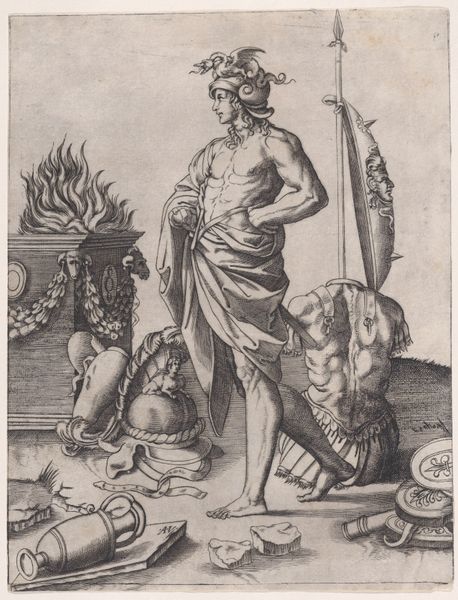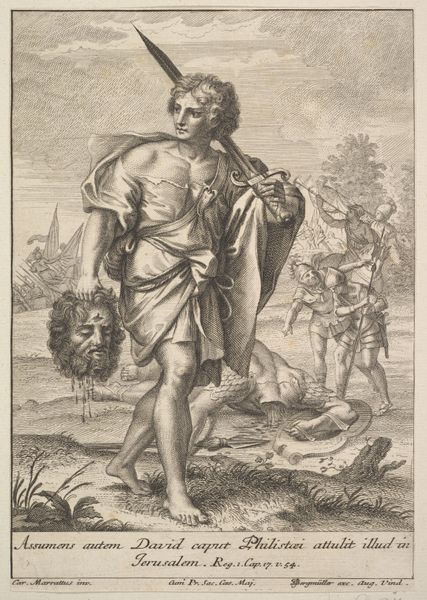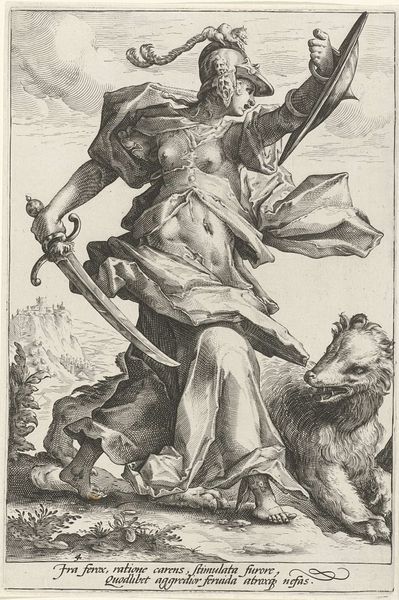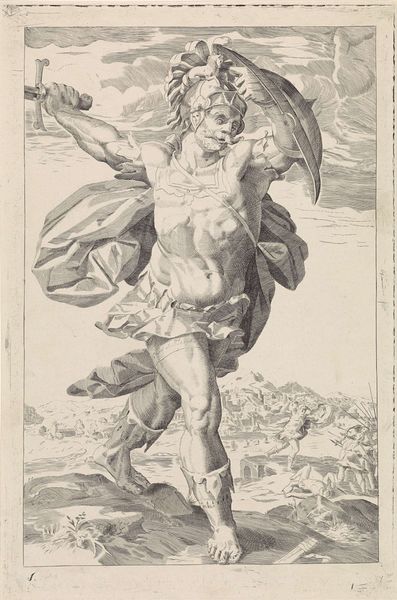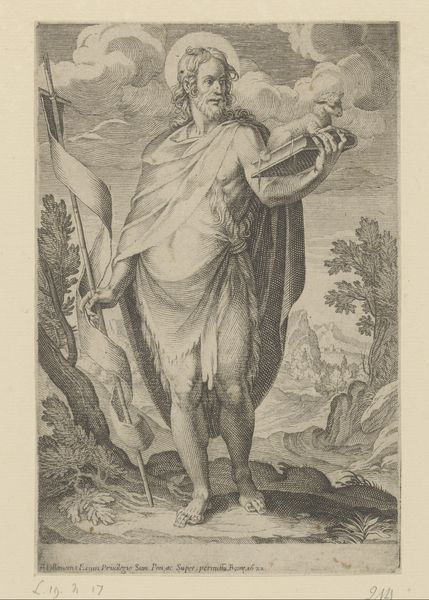
Judah with the Head of Adonibezek, from Willem van Haecht, Tyrannorum proemia, 1578 1578
0:00
0:00
drawing, print, engraving
#
drawing
#
allegory
# print
#
mannerism
#
figuration
#
history-painting
#
engraving
Dimensions: sheet: 5 11/16 x 3 13/16 in. (14.4 x 9.7 cm) plate: 5 3/8 x 3 7/8 in. (13.7 x 9.8 cm)
Copyright: Public Domain
Curator: Here we have an engraving from 1578, "Judah with the Head of Adonibezek" created by Hieronymus Wierix after a design by Willem van Haecht, part of a series titled "Tyrannorum proemia." Editor: My first impression is sheer, operatic violence. The stark contrast of light and shadow amplifies the brutality. It feels...performative somehow, like a morality play frozen in time. Curator: Mannerism, with its dramatic flair, certainly lends itself to that reading. Consider the material production. This is an engraving; a process demanding precision, where the artist etches lines into a metal plate, carefully controlling the ink's distribution. Editor: Yet, despite the precision, there’s a wild energy here. Judah looks less like a hero and more like a man possessed, brandishing Adonibezek’s head as if it's a particularly unpleasant trophy. Curator: Indeed, Wierix renders the scene with graphic detail, focusing our attention on the spoils of war as commodities. The labor behind the piece and what its accessibility, as a printed medium, suggests for the period it was produced in. It engages themes prevalent within 16th-century European political anxieties, illustrating triumph through barbarity. Editor: You’re right, it's not just about the act itself, but about the public display, the spectacle of power. The lifeless body at Judah's feet seems a footnote compared to the horrifying gaze of that severed head. But look closely. His face remains defiant even in death, and those symbols displayed upon what might be a crude banner give a kind of depth and story of violence perpetrated on both sides. Curator: Exactly. This piece becomes a form of propaganda; it is more than the allegorical or historical interpretation it begs. These prints and their ready circulation cemented moral values, establishing cultural ideals through very striking iconography that relied heavily on complex, collaborative production. Editor: What resonates with me most is the sheer human cost. Forget the grand narratives. The focus should be the cold eyes of that head—it echoes the suffering, regardless of any larger “message." Art gives that power, and lends immortality where most of us die unknown. Curator: That raw power to provoke empathy, even repulsion, demonstrates the profound ability of art to question and perpetuate ideological power dynamics in a time marked by conflict. Thank you for considering these ideas with me today!
Comments
No comments
Be the first to comment and join the conversation on the ultimate creative platform.

